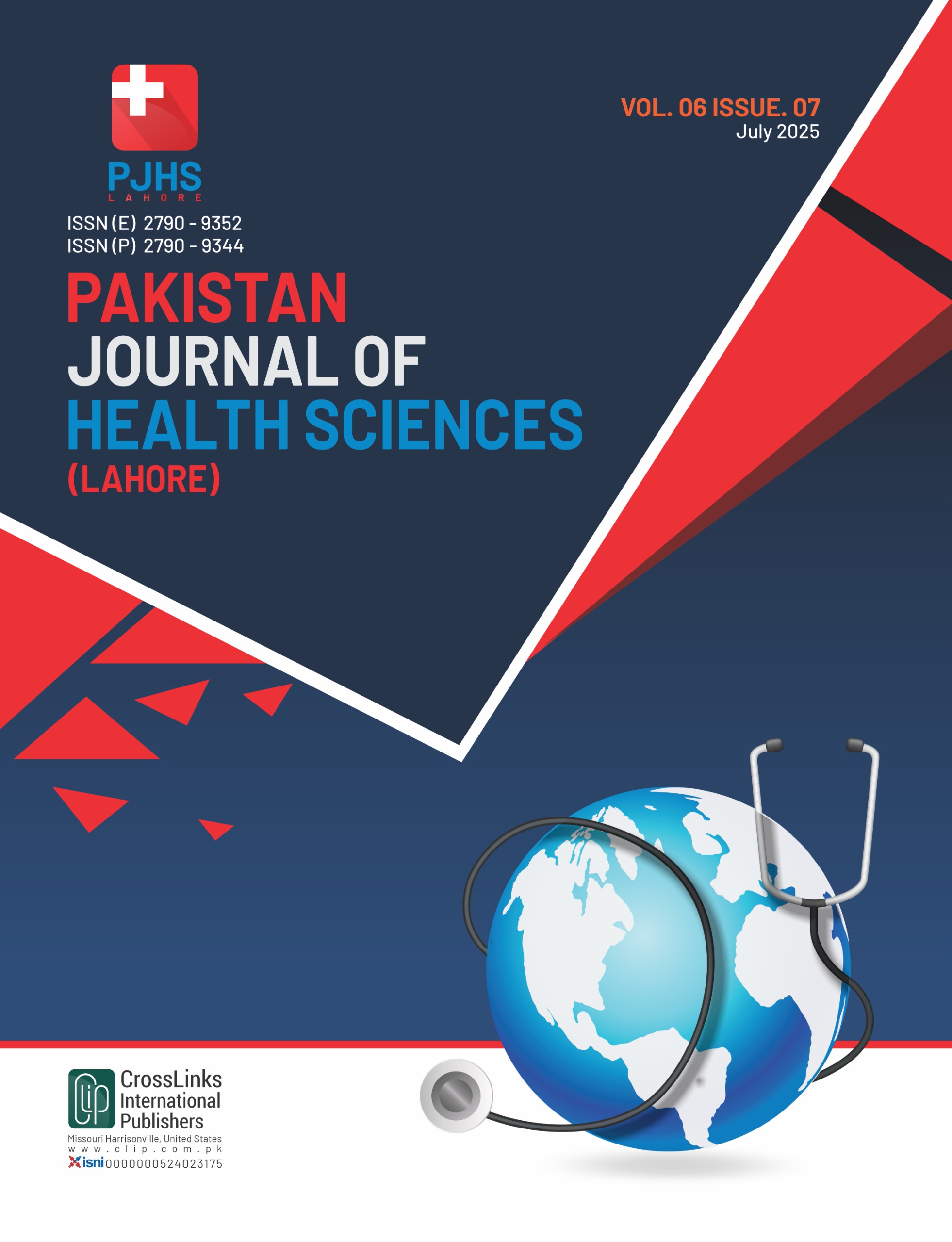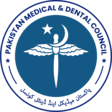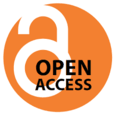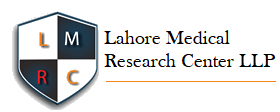Innovative Pedagogies: Exploring Effective Teaching and Learning Methodology from Students’ Perspective
Effective Teaching and Learning Methodology from Students’ Perspective
DOI:
https://doi.org/10.54393/pjhs.v6i7.3065Keywords:
Learning, Teaching, Traditional, Medical, DentalAbstract
In recent years, educational institutions have integrated innovative methods such as interactive learning, digital tools, and student-centered approaches into traditional teaching to enhance understanding and engagement. Evaluating their effectiveness requires insight into students' perceptions is crucial. Objectives: To evaluate innovations in traditional teaching and learning methodology from the students’ perspective of a public institution. Methods: A cross-sectional study was conducted at a Public Sector College, with a sample size of 282 students recruited through non-probability convenience sampling. Medical and dental undergraduates aged 18-24 years from both genders were included, while graduates and faculty members were excluded. Data collection involved a questionnaire filled out by undergraduate students using "Google Forms." Data were analyzed on SPSS version 25.0. Results: Among 82 participants, 41.8% were MBBS students and 58.2% were BDS students. Most students (37.6%) had limited knowledge of non-traditional teaching methods, yet 86.9% believed that specific learning outcomes should be included for each topic. Interactive lectures were favoured over traditional ones (46.8%), and students preferred 45-minute lectures followed by 15 minutes of revision. Nearly half (49.3%) favoured audiovisual learning over rote textbook study. Additionally, 42.2% felt the grading system needs improvement, and 64.5% highlighted the importance of interactive student-teacher strategies. Many preferred knowledge-based activities and e-learning, with 47.9% favoring e-learning over textbooks. Conclusions: It was concluded that transforming learned concepts into applied knowledge is more beneficial for students. Therefore, enhancing medical education is crucial for developing more competent and skilled physicians in the future.
References
Park JC, Kwon HJ, Chung CW. Innovative Digital Tools for New Trends in Teaching and Assessment Methods in Medical and Dental Education. Journal of Educational Evaluation for Health Professions. 2021 Jun; 18. doi: 10.3352/jeehp.2021.18.13. DOI: https://doi.org/10.3352/jeehp.2021.18.13
Zhao B and Potter DD. Comparison of Lecture-Based Learning Vs Discussion-Based Learning in Undergraduate Medical Students. Journal of Surgical Education. 2016 Mar; 73(2): 250-7. doi: 10.1016/j.jsurg.2015.09.016. DOI: https://doi.org/10.1016/j.jsurg.2015.09.016
Pyle M, Andrieu SC, Chadwick DG, Chmar JE, Cole JR, George MC et al. The Case for Change in Dental Education. Journal of Dental Education. 2006 Sep; 70(9): 921-4. doi: 10.1002/j.0022-0337.2006.70.9.tb04162.x. DOI: https://doi.org/10.1002/j.0022-0337.2006.70.9.tb04162.x
Romanelli F, Bird E, Ryan M. Learning Styles: A Review of Theory, Application, And Best Practices. American Journal of Pharmaceutical Education. 2009 Feb; 73(1). doi: 10.5688/aj730109. DOI: https://doi.org/10.5688/aj730109
Sadler‐Smith E. Learning Styles: A Holistic Approach. Journal of European Industrial Training. 1996 Oct; 20(7): 29-36. doi: 10.1108/03090599610127891. DOI: https://doi.org/10.1108/03090599610127891
Shukr I, Zainab R, Rana MH. Learning Styles of Postgraduate and Undergraduate Medical Students. J Coll Physicians Surg Pak. 2013 Jan; 23(1): 25-30.
Kashif M, Raja IM, Rehman A, Iqbal S, Baig MH, Aleem A. Exploring Factors Influencing Females Decision to Pursue Medical and Dental Education in Karachi, Pakistan: A Cross-Sectional Analysis. Pakistan Journal of Medical Research. 2023; 62(4): 163-8
Munna AS and Kalam MA. Teaching and Learning Process to Enhance Teaching Effectiveness: A Literature Review. International Journal of Humanities and Innovation. 2021 Mar; 4(1): 1-4. doi: 10.33750/ijhi.v4i1.102. DOI: https://doi.org/10.33750/ijhi.v4i1.102
Aldrup K, Carstensen B, Klusmann U. Is Empathy the Key to Effective Teaching? A Systematic Review of Its Association with Teacher-Student Interactions and Student Outcomes. Educational Psychology Review. 2022 Sep; 34(3): 1177-216. doi: 10.33750/ijhi.v4i1.102. DOI: https://doi.org/10.1007/s10648-021-09649-y
Nilson LB and Zimmerman BJ. Creating Self-Regulated Learners: Strategies to Strengthen Students’ Self-Awareness and Learning Skills. Routledge. 2023 Jul. doi: 10.4324/9781003443803. DOI: https://doi.org/10.4324/9781003443803
Gutiérrez-González R, Royuela A, Zamarron A. Student Engagement in A Flipped Undergraduate Medical Classroom to Measure Optimal Video-Based Lecture Length. Medical Education Online. 2025 Dec; 30(1): 2479752. doi: 10.1080/10872981.2025.2479752. DOI: https://doi.org/10.1080/10872981.2025.2479752
Lee K and Fanguy M. Online Exam Proctoring Technologies: Educational Innovation or Deterioration? British Journal of Educational Technology. 2022 May; 53(3): 475-90. doi: 10.1111/bjet.13182. DOI: https://doi.org/10.1111/bjet.13182
Chowdhury PN, Vaish A, Puri B, Vaishya R. Medical Education Technology: Past, Present and Future. Apollo Medicine. 2024 Dec; 21(4): 374-80. doi: 10.1177/09760016241256202. DOI: https://doi.org/10.1177/09760016241256202
Hantoobi S, Wahdan A, Al-Emran M, Shaalan K. A Review of Learning Analytics Studies. Recent Advances in Technology Acceptance Models and Theories. 2021 Mar: 119-34. doi: 10.1007/978-3-030-64987-6_8. DOI: https://doi.org/10.1007/978-3-030-64987-6_8
Ahmed Y, Taha MH, Khayal S. Integrating Research and Teaching in Medical Education: Challenges, Strategies, and Implications for Healthcare. Journal of Advances in Medical Education and Professionalism. 2024 Jan; 12(1): 1.
Ngoasong MZ. Curricsulum Adaptation for Blended Learning in Resource-Scarce Contexts. Journal of Management Education. 2022 Aug; 46(4): 622-55. doi: 10.1177/10525629211047168. DOI: https://doi.org/10.1177/10525629211047168
Charbonneau-Gowdy P, Salinas D, Oyanedel JC, Magaña H. Designing the’ New Normal': Key Insights from the Pandemic for Transforming Online Learning Going Forward. Contemporary Educational Technology. 2023 Jul; 15(3): ep446. doi: 10.30935/cedtech/13389. DOI: https://doi.org/10.30935/cedtech/13389
Kashif M, Shaikh A, Najmi N, Iqbal A. Dental Post Graduate Educational Programmes Preferences in Pakistan and Factors Affecting It: A Cross-Sectional Survey Conducted at Karachi, Pakistan. Pakistan Journal of Medical Research. 2019 Apr; 58(2).
Abbas U, Parveen M, Sahito FS, Hussain N, Munir S. E-Learning in Medical Education: A Perspective of Pre-Clinical Medical Students from A Lower-Middle Income Country. BioMed Central Medical Education. 2024 Feb; 24(1): 162. doi: 10.1186/s12909-024-05158-y. DOI: https://doi.org/10.1186/s12909-024-05158-y
Kiesewetter J, Sailer M, Jung VM, Schonberger R, Bauer E, Zottmann JM et al. Learning Clinical Reasoning: How Virtual Patient Case Format and Prior Knowledge Interact. BioMed Central Medical Education. 2020 Mar; 20(1): 73. doi: 10.1186/s12909-020-1987-y. DOI: https://doi.org/10.1186/s12909-020-1987-y
Almarzooq ZI, Lopes M, Kochar A. Virtual Learning During The COVID-19 Pandemic: A Disruptive Technology in Graduate Medical Education. Journal of the American College of Cardiology. 2020 May; 75(20): 2635-8. doi: 10.1016/j.jacc.2020.04.015. DOI: https://doi.org/10.1016/j.jacc.2020.04.015
Kashif M, Kamran MA, Rizwan S, Iqbal S, Aslam A, Shifa S. Awareness of Dental Students About Forensic Odontology in Karachi, Pakistan. Journal of Oral Health and Oral Epidemiology. 2020 Jul; 9(3): 49-55.
Frenk J, Chen L, Bhutta ZA, Cohen J, Crisp N, Evans T et al. Health Professionals for a New Century: Transforming Education to Strengthen Health Systems in an Interdependent World. The Lancet. 2010 Dec; 376(9756): 1923-58. doi: 10.1016/S0140-6736(10)61854-5. DOI: https://doi.org/10.1016/S0140-6736(10)61854-5
Singh K, Srivastav S, Bhardwaj A, Dixit A, Misra S. Medical Education During the Covid-19 Pandemic: A Single Institution Experience. Indian Pediatrics. 2020 Jul; 57(7): 678-9. doi: 10.1007/s13312-020-1899-2. DOI: https://doi.org/10.1007/s13312-020-1899-2
Subedi S, Nayaju S, Subedi S, Shah SK, Shah JM. Impact of E-Learning During the COVID-19 Pandemic among Nursing Students and Teachers of Nepal. International Journal of Science and Healthcare Research. 2020 Sep; 5(3): 68-76.
Downloads
Published
How to Cite
Issue
Section
License
Copyright (c) 2025 Pakistan Journal of Health Sciences

This work is licensed under a Creative Commons Attribution 4.0 International License.
This is an open-access journal and all the published articles / items are distributed under the terms of the Creative Commons Attribution License, which permits unrestricted use, distribution, and reproduction in any medium, provided the original author and source are credited. For comments













